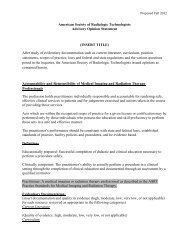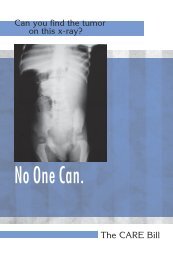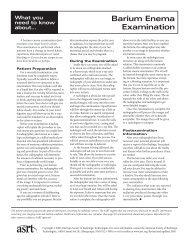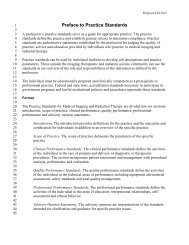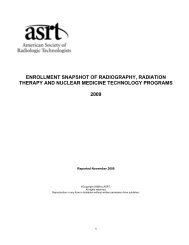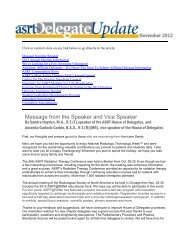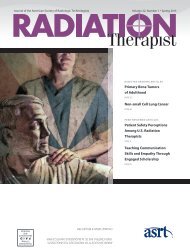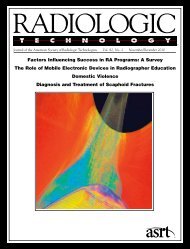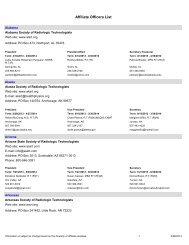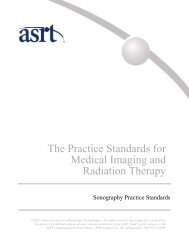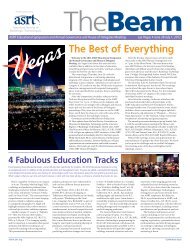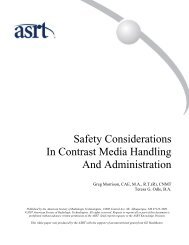Radiologist Assistant Curriculum - American Society of Radiologic ...
Radiologist Assistant Curriculum - American Society of Radiologic ...
Radiologist Assistant Curriculum - American Society of Radiologic ...
You also want an ePaper? Increase the reach of your titles
YUMPU automatically turns print PDFs into web optimized ePapers that Google loves.
Content<br />
I. Fluoroscopy<br />
A. Clinical advantages<br />
1. Demonstration <strong>of</strong> motion — dynamic anatomy (peristalsis)<br />
B. Components <strong>of</strong> fluoroscopic units<br />
1. Table<br />
2. Radiation source<br />
3. Image intensifier carriage<br />
a. Table controls<br />
b. Fluoro controls<br />
c. Image controls<br />
4. Optics system<br />
a. Video interface<br />
b. Image recording devices<br />
c. Video monitor<br />
5. Locks and angle indicators (mobile)<br />
6. Structural provisions for radiation shielding<br />
a. When used routinely in one area for both fixed and mobile equipment<br />
7. Equipment provisions<br />
a. Source-to-skin distance (SSD) control<br />
b. Control <strong>of</strong> radiation field<br />
c. Maximum exposure rate<br />
d. Lead apron requirements<br />
e. Maximum entrance dose vs. equipment setup and technique<br />
f. Scatter/isodose curves in relation to mobile equipment setup and personnel<br />
placement<br />
8. Limiting the use <strong>of</strong> “high level control” or “boost position” during fluoroscopy<br />
9. Personnel monitoring <strong>of</strong> radiation exposure<br />
10. Image recording, archiving and retrieval<br />
C. Technical factors affecting the radiation dose rate for patients and operators<br />
1. Direct factors<br />
a. Milliamperage (mA)<br />
b. Peak kilovoltage (kVp)<br />
c. Collimation<br />
1) Impact on integral dose<br />
d. Filtration<br />
1) Inherent and added<br />
e. Exposure time<br />
f. Source-to-skin distance<br />
g. Grids<br />
h. Pulse fluoroscopy<br />
2. Indirect factors<br />
a. Fluoroscopic room lighting<br />
b. Poor image receptor quality<br />
32<br />
© Copyright 2011 by the <strong>American</strong> <strong>Society</strong> <strong>of</strong> <strong>Radiologic</strong> Technologists. All rights reserved.



